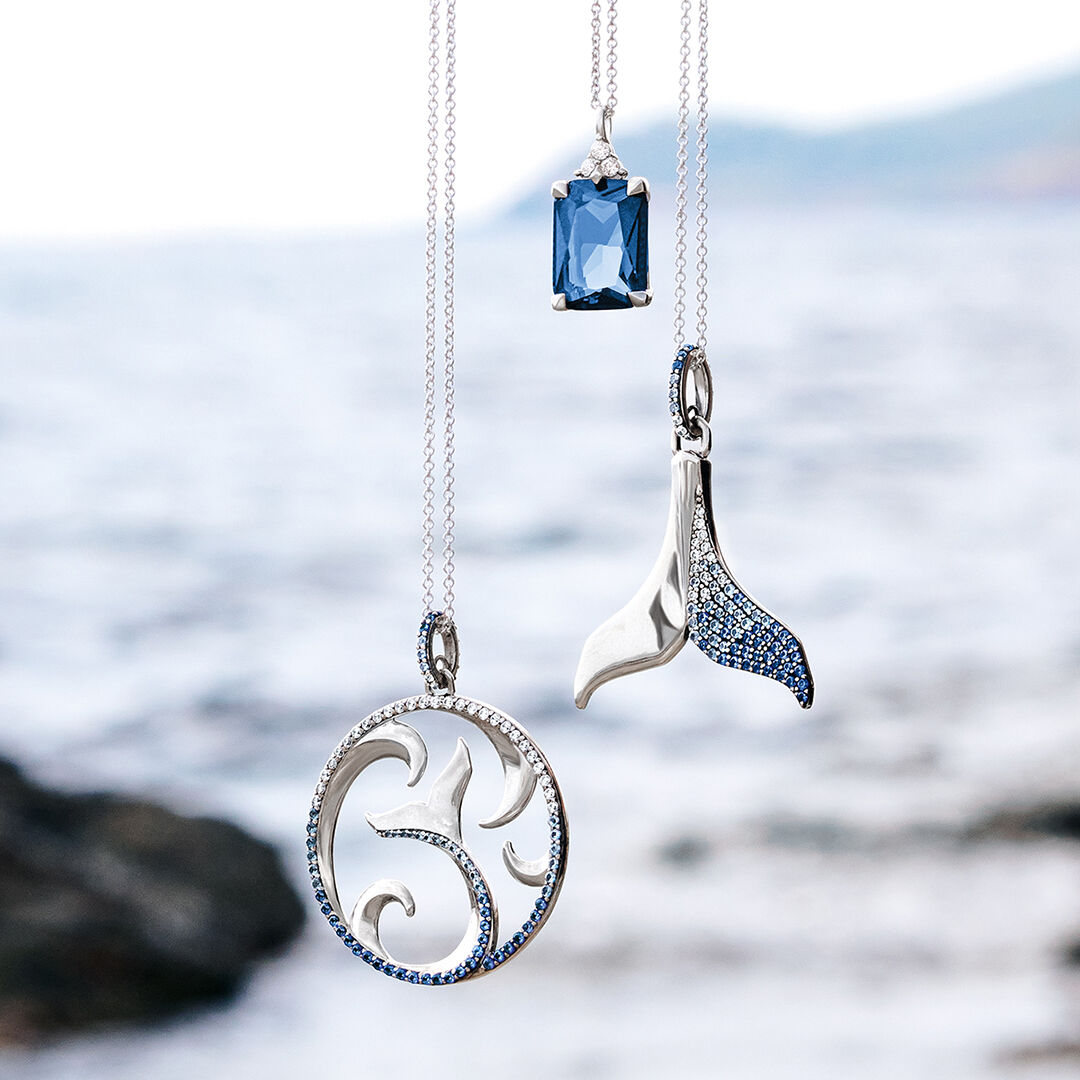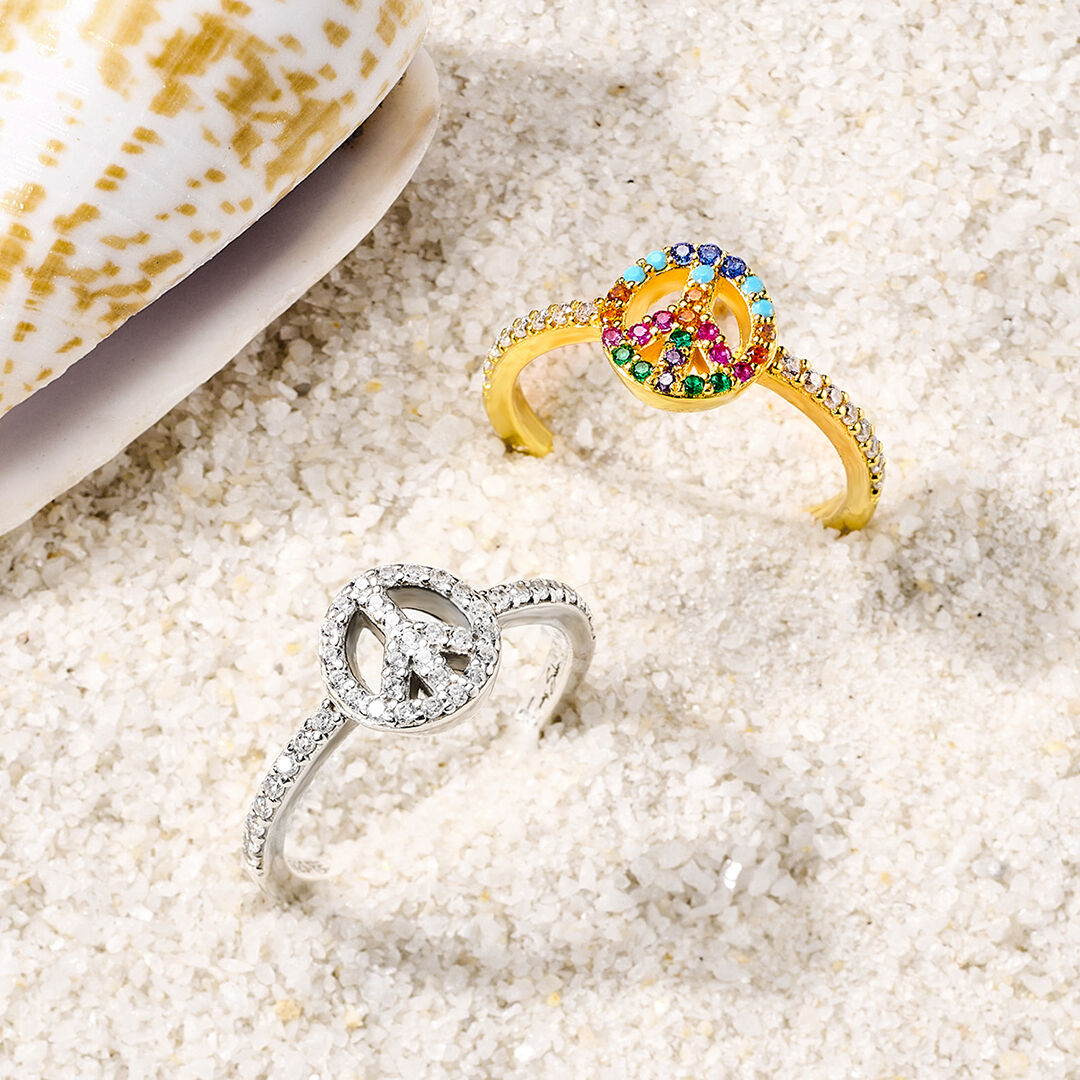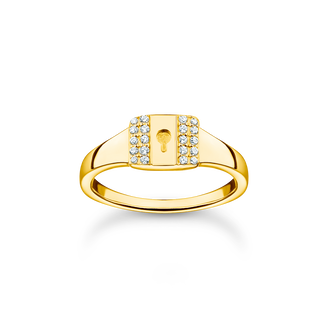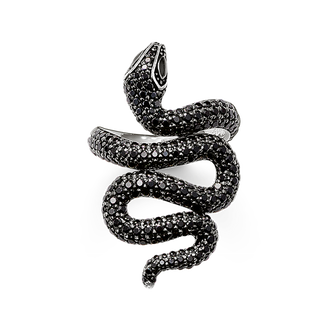
What is a zirconia?
For several decades, zirconia stones have been widely used. This can be attributed to their endless sparkle and their great variety of sizes, cuts, and colours. The zirconia’s hardness lies between 8 and 8,5 on the Mohs scale. By comparison, a diamond has a hardness level of 10 and is therefore the hardest natural material. In their aesthetic and high brilliance, both stones are very similar. Laymen are not able to distinguish between zirconia stones and diamonds and diamond or zirconia jewellery without the respective labelling. The difference between the two is invisible to the unaided eye of experts, too. To do so, they need to determine the refraction and their thermal conductivity. Diamonds conduct heat very well, whilst zirconia stones do not conduct heat efficiently. When it comes to their refraction, diamonds are one step ahead, too.
Zirconia stones are not real gemstones, but artificially produced minerals. Yet, the latter can be worked into gemstones and resemble real diamonds. The price and value of a zirconia are much lower and thus enable the creation of jewellery pieces with opulent stone embellishments.
This stone is of great importance for THOMAS SABO. In fact, numerous designs in our portfolio are characterized by its brilliance and versatility. In white or black, in a strong pink or royal blue – zirconia stones are inseparably connected to our iconic jewellery pieces.
Where does this stone come from?
Unlike diamonds, sapphires, rubies, rose quartz and other gemstones or semiprecious stones, zirconia stones are not stones of natural origin. The zirconia is not created under extreme pressure and high heat in the Earth’s interior and does not have to be extracted from rock. Instead, zirconia stones are artificially created and made of zirconium oxide.
Whether it’s gold or rare gemstones – people in history have always tried to create precious materials themselves. Modern technologies finally made this possible, and in the 1960s enabled the creation of the first imitations of diamonds in a laboratory. Ten years later, at the Physics Institute of the Russian Academy of Sciences in Moscow, bigger crystals could be created and the commercial production of zirconia stones started.
How are zirconia stones made?
Colloquially, zirconia stones are called diamond imitations or artificial diamonds. Experts call it cubic zirconia or “cubic stabilized zirconium oxide”. Unlike the natural stone, the artificial stone does not consist of carbon, but zirconium oxide and single crystals. The special feature of oxide is the fact that it stabilizes at a high melting temperature of 2.700 °C and turns into a cubic crystalline structure.
The production process in more detail
- Zirconium oxide powder is heated and melted.
- An additive such as calcium or yttrium oxide is being added as a stabilizer so that the cubic structure maintains its shape after cooling down.
- In order to create different colours, different metal oxides such as caesium, nickel, chrome and calcium are admixed.
- The heat is slowly being reduced and the melt slowly cools down.
- Below the protective sheath, crystals have been created that can be worked into gemstones.
What is the difference between zircon and zirconia?
Just like diamonds, zircons are of natural origin. Zircon is a mineral that crystalizes in a tetragonal crystal system and creates short prismatic crystals. Most zircons are colourless and transparent or translucent white. Due to admixtures, zircons can look brownish or red. Their Mohs hardness level is 7,5. Just like zirconia, zircons are used to replace diamonds when it comes to creating jewellery for women and men. Unlike zirconia stones, zircons are real gemstones.
Zirconia facts at a glance
- high-quality, synthetic stone without any equivalent natural models
- its aesthetic and brilliance are similar to a diamond’s, but it is not a diamond
- clarity: no inclusions, since it is an artificial stone
- zirconia’s Mohs hardness: 8-8,5
- colours: great variety; for example, white, black, blue, red, pink, champagne, green and yellow
- density: approximately 5,6 (diamonds: 3,5)
- occurrence: manufactured artificially
- abbreviation: CZ for cubic zirconia is commonly used in the jewellery industry
- highly resistant against scratches
Diamonds fascinate people due to their high resistance and pronounced brilliance. Their value depends on the 4 Cs: carat or weight, colour, clarity and cut. The stone’s clarity is a crucial factor with regards to its brilliance. If it shows any inclusions or other flaws, the value decreases. A flawless diamond is therefore very expensive and rare. Zirconia stones can easily fulfil all of these standards. They can be created without any inclusions or other flaws and be reasonably priced at the same time.
Today, a stone’s natural appearance plays a huge role. This is why zirconia stones are produced with artificial inclusions in order to imitate their natural models and make it more difficult to differentiate them from real stones.
Zirconia stones are not rhinestones
Jewellery pieces with a so-called opulent stone embellishment are perfect for glamorous occasions. In the 1920s, the urge to make a grand entrance was very big which is why necklaces, bracelets and earrings, headdress and dresses sparkled intensely. Herewith, rhinestone was used, since it aimed at imitating diamonds. Unlike zirconia stones, rhinestone is made of glass. Georg Friedrich Strass invented it in the 18th century. The jeweller from Alsace created stones using lead-containing glass in order to reach the same glow and colour dispersion that diamonds have.
Rhinestone jewellery is usually less high-quality than zirconia jewellery, since the stones are glued and not mounted. Furthermore, the glass stones can break. Therefore, rhinestone embellishments can come off over time or break. In the jewellery industry, rhinestone can oftentimes be found since it is very cheap. Unfortunately, it is not characterized by its resistance.

The use of zirconia stones for jewellery making
Zirconia stones have been created as a replacement for diamonds in order to fulfil different purposes. The original reason for its research was scientists’ attempt at finding an artificial crystal for laser technologies. The latter should have certain properties and the research’s result was the zirconia stone. Nowadays, due to its aesthetic characteristics, it is used in the field of technical optics for windows, lenses, prisms, filters and laser elements as well as in the chemical industry for inspection windows in case of corrosive liquids.
The artificially produced stones are particularly important jewellery creations. They perfectly resemble diamonds and help create rings, bracelets, earrings and pendants for women and men with zirconia stones that have the same aesthetic. Yet, their prices are way lower compared to real diamond jewellery. In order to obtain the same aesthetic, zirconia stones are mostly designed with a brilliant cut. They then have a similarly high brilliance. THOMAS SABO embellishes the stones with other cuts such as the octagon, princess and baguette cut. The elaborately created zirconia stones are polished by hand and set by our experienced jewellery experts with the finest tools. They then fix them with metal grains and prongs that provide a firm hold.
Maintenance tips for zirconia jewellery
Jewellery pieces with the sparkling diamond alternative consist of 925 Sterling silver . Most of our THOMAS SABO designs are made of this silver alloy. The metal can discolour and oxidize when it comes into contact with hydrogen sulphide. If this is the case, you should clean your zirconia jewellery pieces.
Furthermore, dust, dirt, cosmetic products and other substances can build up on the stones’ surface and between the settings. Then you should take care of your zirconia jewellery.
Maintenance and cleaning tips for your zirconia jewellery
- Remove earrings, necklaces, bracelets and rings before sport sessions, going for a swim, taking a shower, a bath or before going to sleep.
- Clean silver jewellery with even surfaces with jewellery wipes.
- Use a jewellery bath in order to clean jewellery pieces made of 925 Sterling silver with zirconia stones.
- Dry the jewellery pieces well with a soft cloth, but not with a microfiber cloth.
- Store your jewellery in a jewellery box or in the THOMAS SABO packaging after your jewellery pieces have dried completely.
Recap: zirconia stones – synthetic stones
“Synthetic“ means “artificially produced”. Synthetic stones usually have a natural role model and imitate its chemical and physical characteristics. Zirconia stones are created by people in laboratories – under high pressure and heat that support the raw material’s formation. It can then be polished and brought into its shape. Synthetic stones are characterized by:
- colour uniformity
- clarity
- high brilliance
- perfect cut







